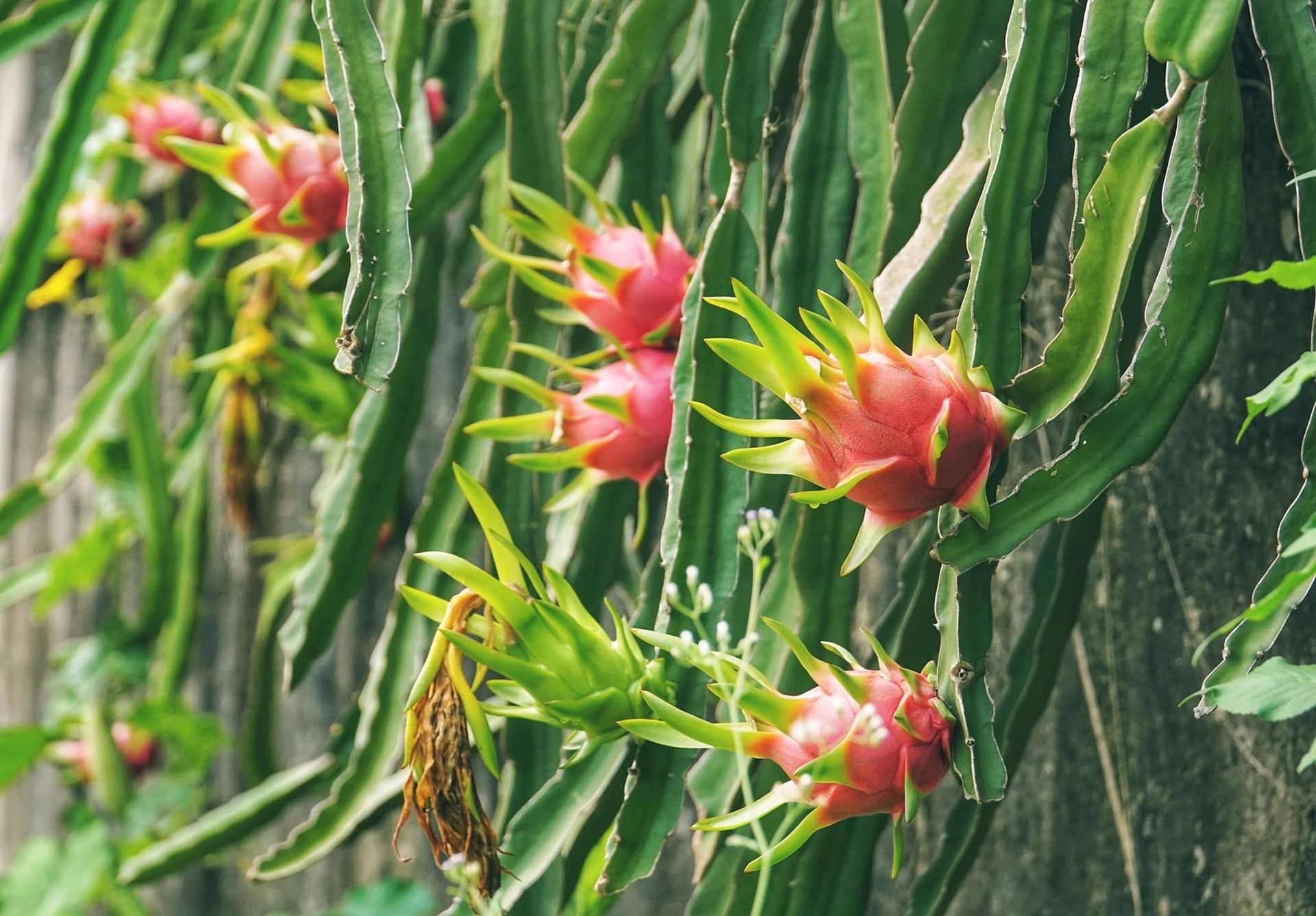
5 mins read
The Most Popular Dragon Fruit Varieties for Commercial Cultivation
With its unique taste and striking appearance, Dragon fruit presents both opportunities and challenges for commercial growers in the fruit market.
Choosing a suitable variety is crucial, balancing climate compatibility, flavor appeal, and market demand. In this exploration, we'll find the top dragon fruit varieties that capture the attention of farmers and consumers alike. Whether you're a seasoned grower or intrigued by this vibrant fruit, we will explore which varieties are the most successful for cultivating dragon fruit.
Overview of Dragon Fruit Varieties
Dragon fruit, known scientifically as a member of the Cactaceae family, presents a world of diversity under its umbrella. While the most commonly cultivated varieties are the Hylocereus and Selenicereus, there is so much more. Between genus and species, it can be really challenging to distinguish all the characteristics of this fruit.
Each variety differs not only in appearance and taste but also in its cultivation needs and marketability. The choice of fruits is a strategic decision for commercial growers, influenced by local climate, soil conditions, and targeted consumer preferences. This diversity ensures the pitahaya market remains vibrant and continuously evolving, offering something for every palate.
Hylocereus Varieties
American Beauty - H. Guatemalensis
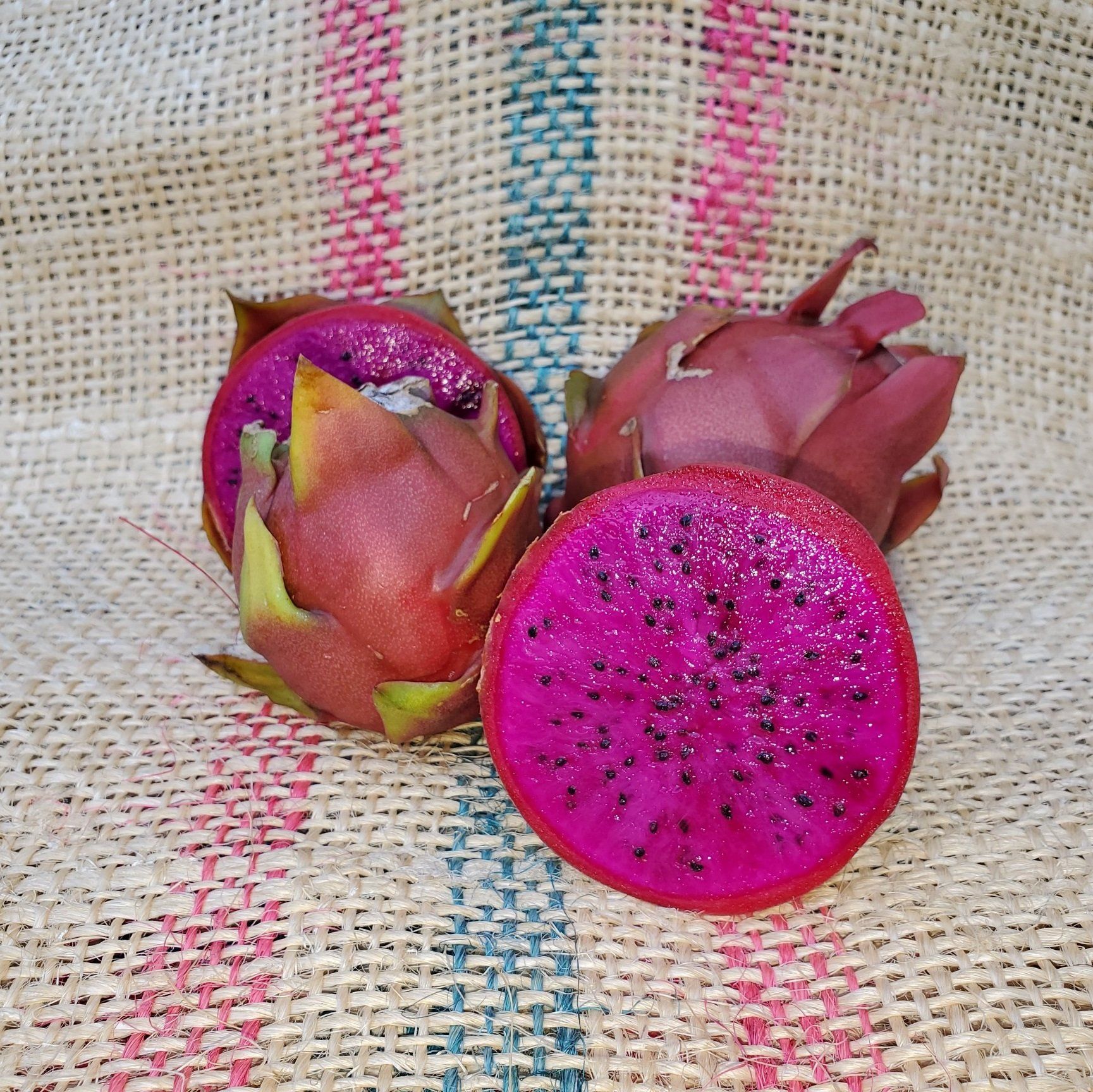
The American Beauty dragon fruit, from the Hylocereus genus and Guatemalensis species, is known for its vibrant appearance and rich flavor. Originating from Guatemala, it has successfully adapted to various growing conditions. But, this pitahaya's soft pulp and thin skin make it susceptible to bruising. Its stems are distinctively three-sided with small spines, characteristic of Guatemalan varieties. The fruit typically weighs between 0.5 to 1 pound and has a beautiful transition from green to pink on its skin.
American Beauty is a self-pollinating variety renowned for its very flavorful fuchsia-colored flesh. It flourishes best when allowed to climb, producing large, fragrant, night-blooming flowers that add to its charm. Its commercial potential is excellent, especially when grown in a protected environment.
Bien Hoa Red - H. Guatemalensis

The Bien Hoa Red dragon fruit, from the Hylocereus genus and Guatemalensis species, is a self-pollinating variety known for its flavorful profile and striking appearance. This dragon fruit, originating from Guatemala, is noted for its juicy pulp but lacks firmness. A Brix rating averaging 18 to 19 offers a delightful taste experience. This variety yields round fruits averaging about 1 pound, characterized by greenish-red skin and purple.
Bien Hoa Red adapts well to various locations and growing conditions, making it a versatile choice. It thrives best when allowed to climb, producing large, fragrant flowers that bloom at night. Due to its fragile skin, this pitahaya is more suitable for local markets or protected cultivation environments.
Armando - H. Costaricensis
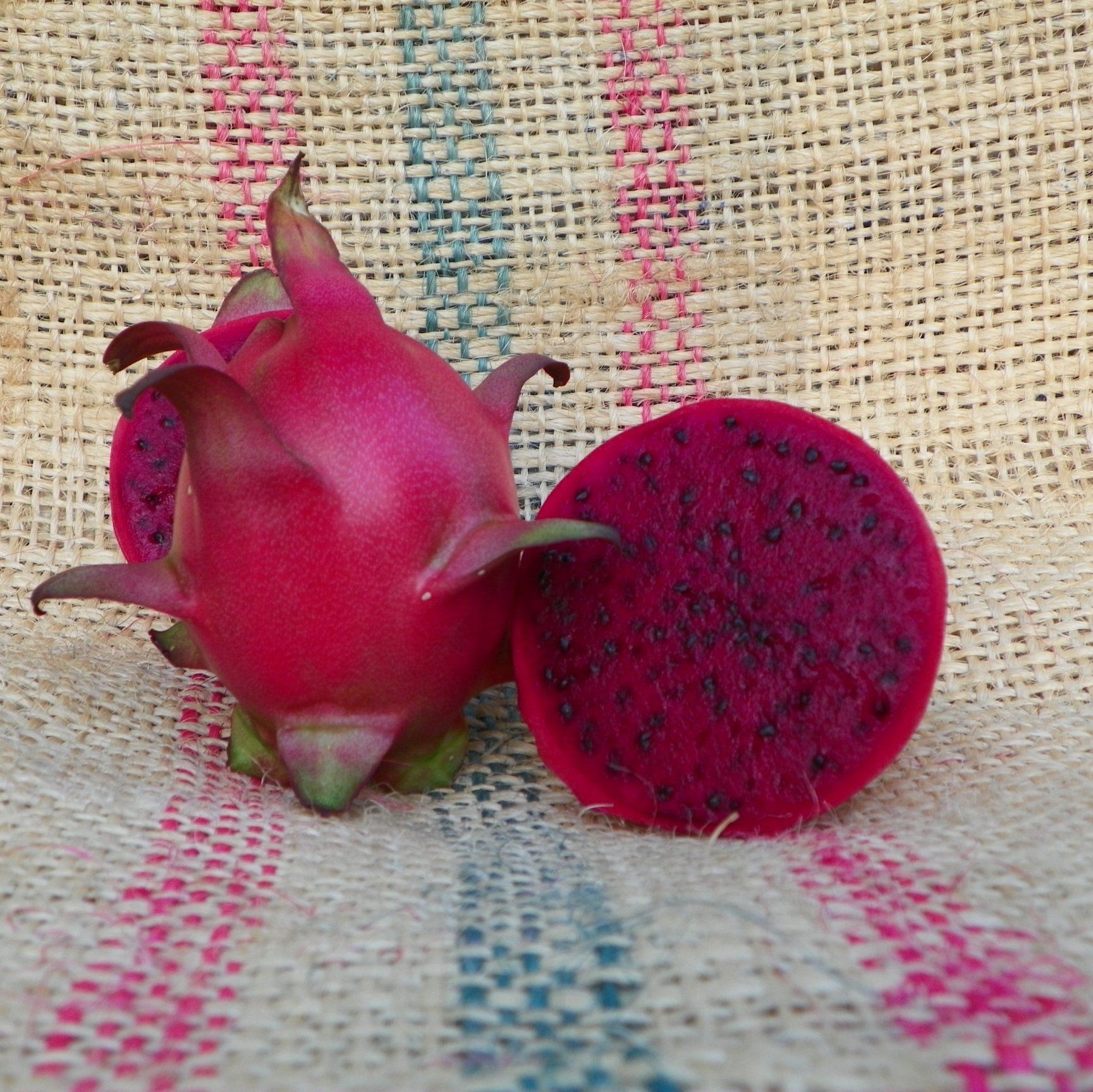
Belonging to the Hylocereus Costaricensis species, this is an excellent resilient variety. Originating near the Honduras-Nicaragua border, this variety has a strong resistance to both frost and heat. However, Armando requires hand pollination or natural pollinators to bear fruit. This red skin and firm, sweet flesh fruit weighs around 1 pound.
Once pollinated, the fruit will grow beautiful white and yellow flowers. Armando is a good choice for an environment that may experience light frost and high heat.
Seoul Kitchen - H. Undatus
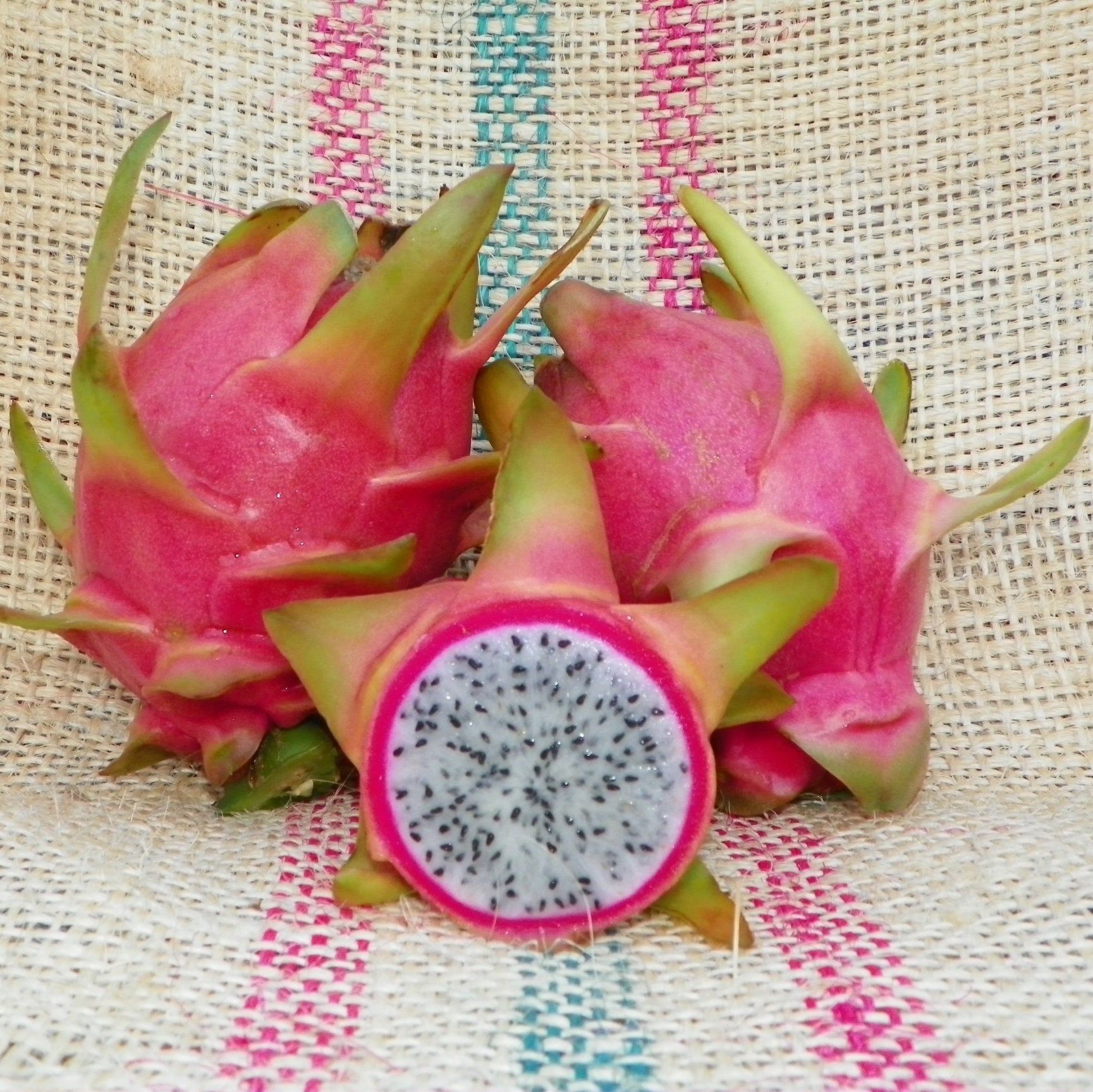
The Seoul Kitchen dragon fruit is a captivating, sweet hybrid from the Hylocereus genus. This self-pollinating variety is known for its medium to large-sized fruits, typically weighing between 0.7 to 1.5 pounds. The fruit features a white, smooth, creamy flesh that's delightful when chilled and eaten fresh. It has a distinctive pinkish-red skin with green tips.
The Seoul Kitchen stands out for its adaptability to various growing conditions and soils, thriving best when allowed to climb. It blooms with large, fragrant flowers, uniquely positioned among white-fleshed dragon fruits.
Vietnamese White - H. Undatus
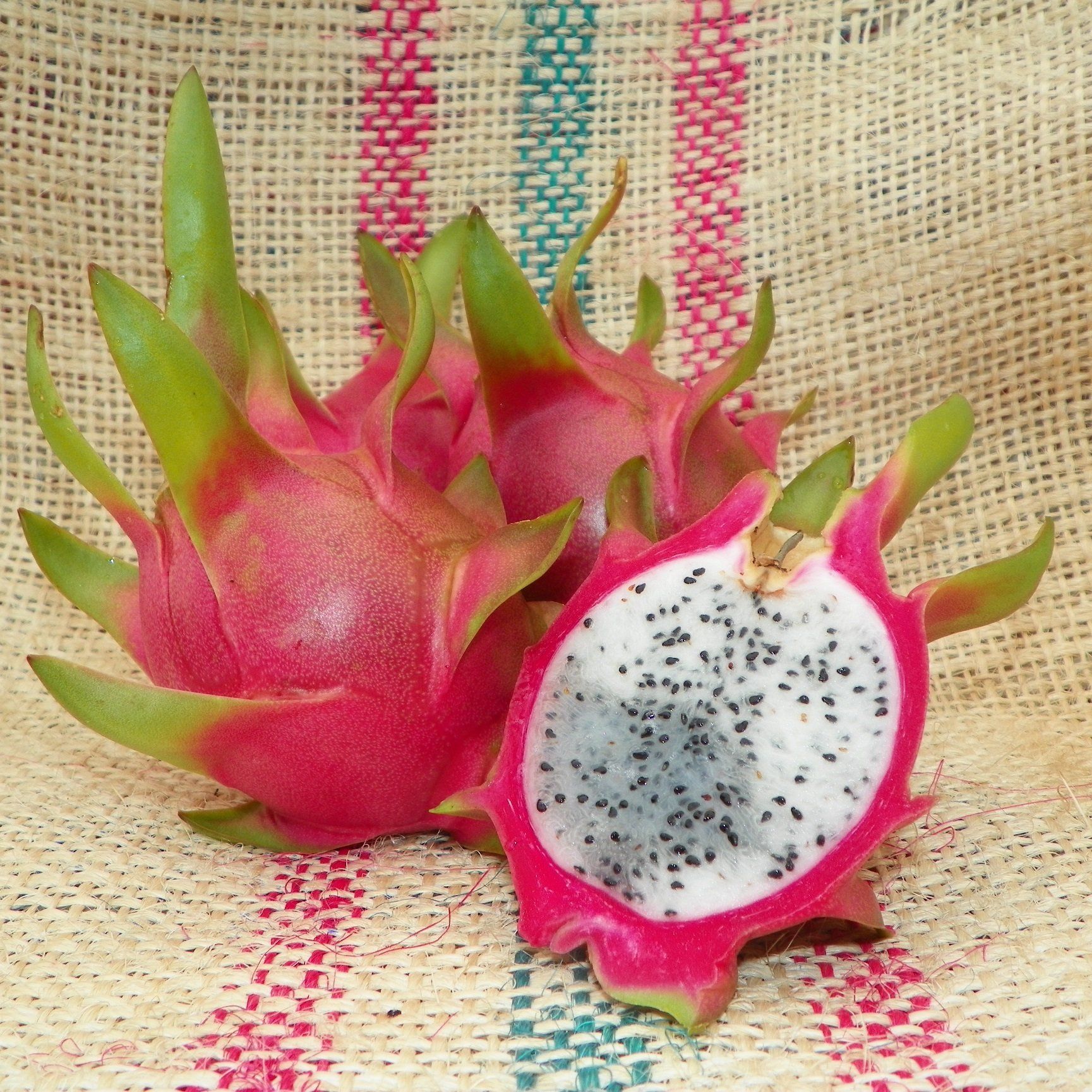
The Vietnamese White dragon fruit, imported from Vietnam, is a self-pollinating variety renowned for its striking pink and green appearance. Three-sided stems with small spines characterize the plant and produce egg-shaped fruit weighing about 1 to 1.75 pounds. The Vietnamese White is a fruit with a delectable taste of a kiwi or watermelon.
Vietnamese White is an excellent option for new dragon fruit growers due to its easy cultivation and consistent fruiting.
Orejona - H. Polyrhizus
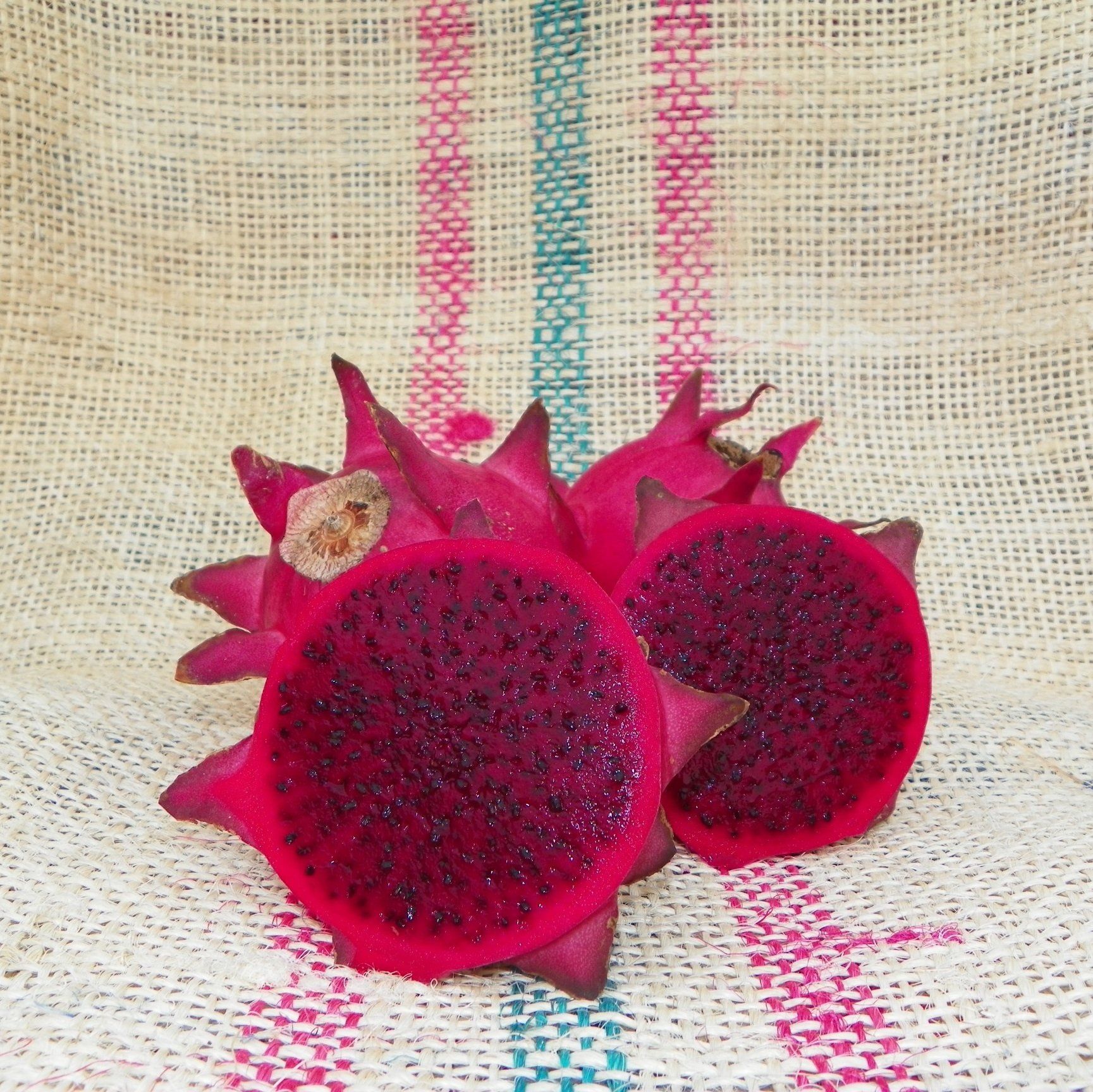
Originating from Nicaragua, Orejona is a unique dragon fruit known for its round shape, small fins, and dark red flesh and skin. The spiny nature of the plant can cause problems during harvest. Still, the high antioxidant content of this tasty pitahaya, with a Brix score of around 16, may be worth it.
Once mature, this plant grows rapidly and is a prolific producer. The grayish coating of the stems helps protect the plant from extreme weather, making it a good selection if you are in a high-heat environment.
Hana - H. Monacanthus
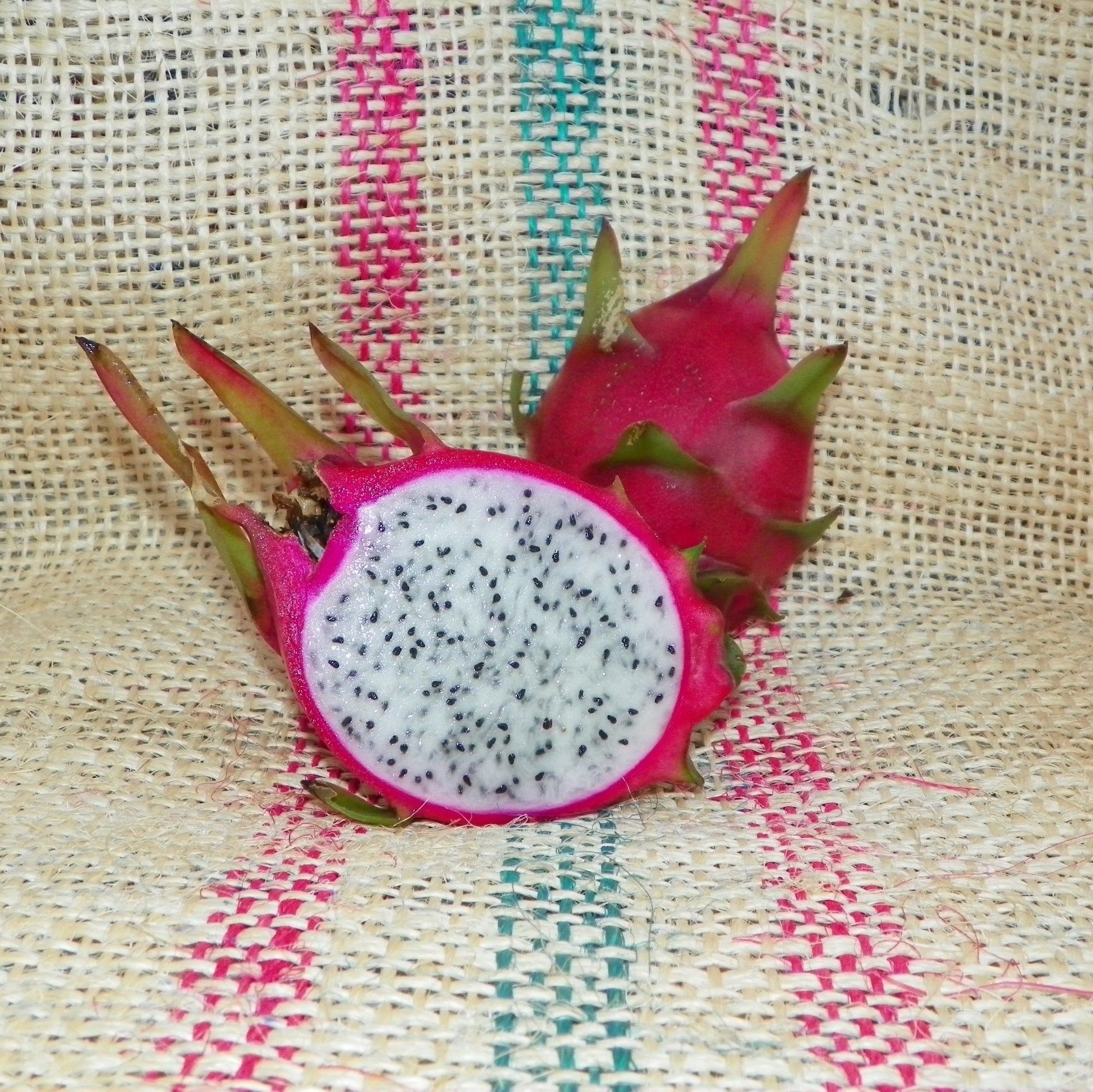
A variety of Hylocereus monacanthus species, Hana offers a unique taste of tropical, sweet melon, and floral. This pitahaya is one of the fastest growers with quick fruit development. The fruits are smaller, with slender stems with long thorns. The average 1-pound fruit has a Brix rating of 18.
Hana is self-fertile and an excellent pollen source for other dragon fruit types. In addition to being a good source of pollen, the flowers are stunning, transitioning from white to soft pink. This variety is a great choice for commercial use due to its fast growth and unique flavor.
Valdivia Roja - H. Ocamponis

The Valdivia Roja dragon fruit, belonging to the Hylocereus Ocamponis species, originates from Jalisco State in Mexico. It is recognized for its firm flesh, delivering a sweet taste with a Brix rating averaging 18. The fruit is a distinctively oval, orangish-red hue with small green fins and deep red flesh. This variety, typically weighing between 0.5 to 0.75 pounds, requires cross-pollination, usually done by hand.
Even if the growth is slow, the Valdivia Roja's thick and three-sided stems have a grayish-white coating, showcasing its resilience to heat and cold.
Selenicereus Varieties
Yellow Dragon - S. Megalanthus
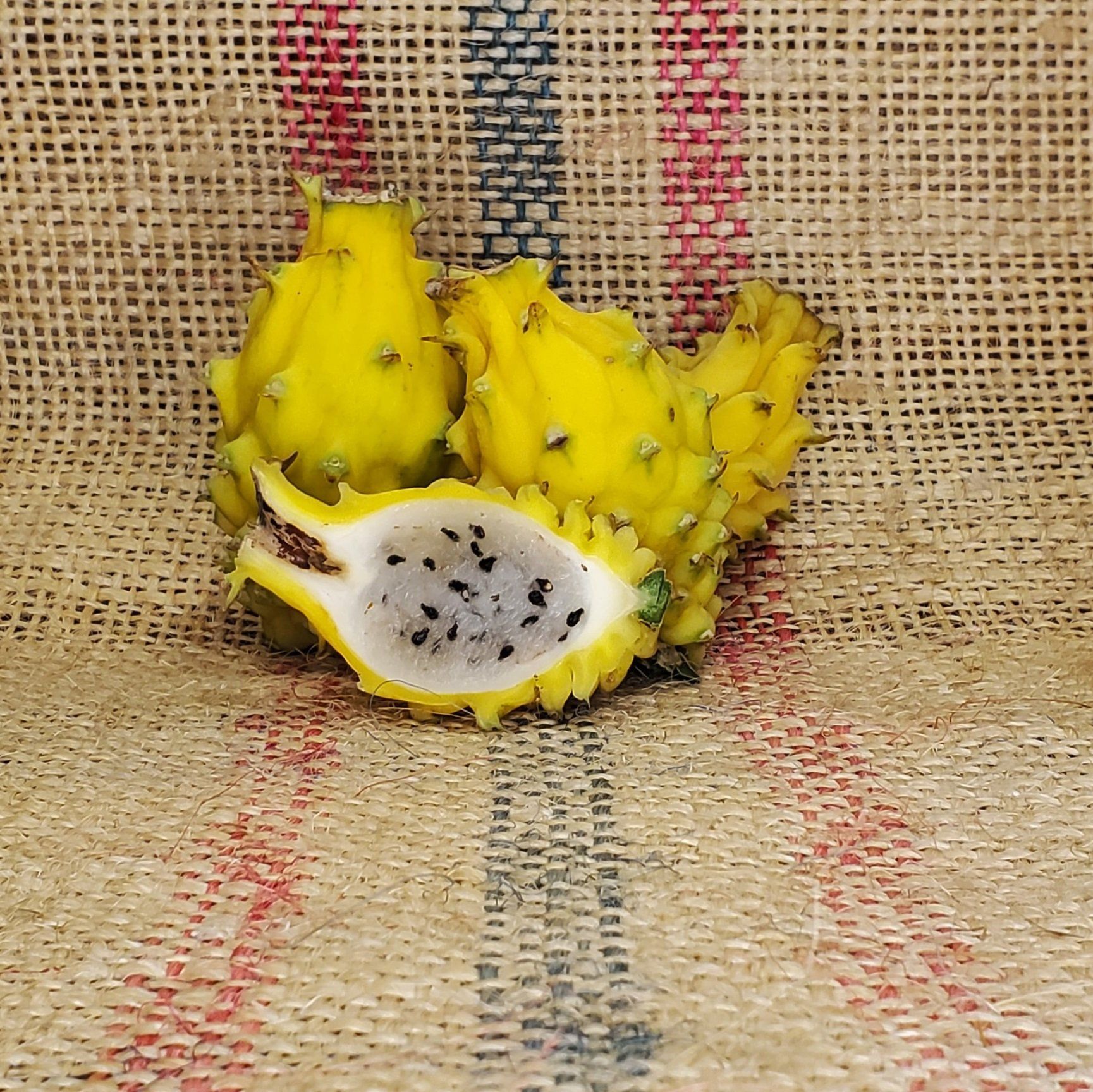
The Yellow Dragon is native to Northern South America and is recognizable for its distinctive yellow skin with spines. This variety is notable for its small to medium-sized fruits, weighing about 0.5 to 0.75 pounds. The flesh is juicy and remarkably sweet.
The flowers of this pitahaya are self-pollinating but remain challenging to cultivate. Indeed, the Yellow Dragon is sensitive to heat and cold and can easily rust during excess rainfall. This variety has the most extended fruiting season. So, if you are up to a challenge, this pitahaya will reward you with one of the tastiest fruits on the market!
Palora - S. Megalanthus
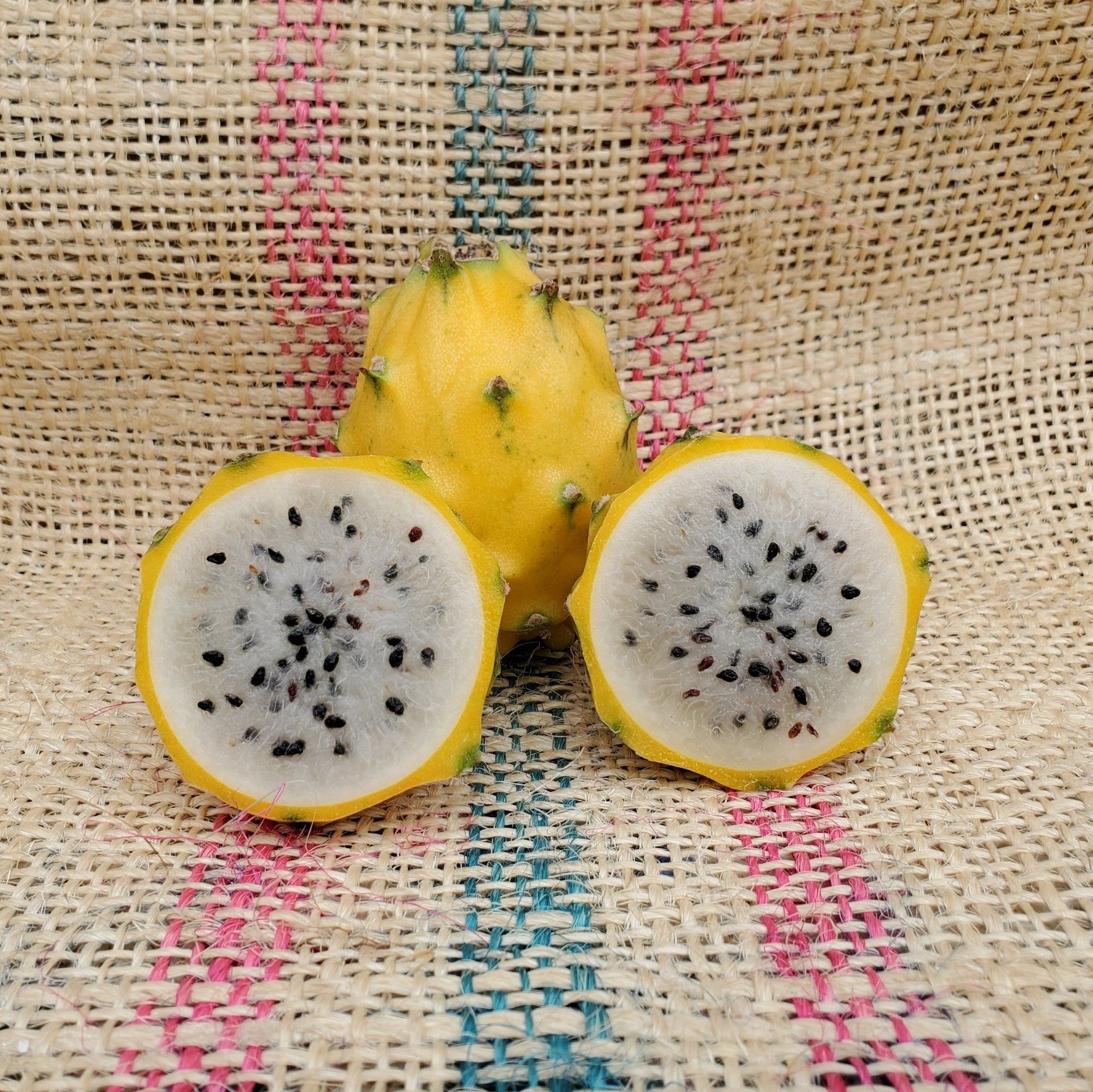
Originating from Ecuador, this variety is known for its yellow skin and white flesh, juicy tropical sweetness, and crunchy seeds. Palora dragon fruit is larger than its relative, the Yellow Dragon, with fruits typically weighing 1 to 1.5 pounds and a Brix score of 20-24.
This variety is self-fertile and a rapid grower. Furthermore, Palora is more resilient to its environment than the Yellow Dragon. When ripe, the spines on the fruit can effortlessly be brushed off, making it easy to harvest despite the thorns. With its vigorous growth and sweet flavor, Palora is a good choice for commercial cultivation.
Conclusion: A Range of Flavors and Opportunities
In this exploration of dragon fruit varieties, we've discovered that each type, from the striking American Beauty to the delightfully sweet Palora, offers unique flavors and reflects the intricate balance of agricultural science and market needs. This journey highlights the importance of variety selection in commercial farming, blending botanical diversity with consumer preferences. For enthusiasts and cultivators, the pitahaya varieties offer opportunities and discoveries.
Credit
All dragon fruit images are from Spicy Exotics
Resources
Spicy Exotics Your source for over 100 varieties of dragon fruit plant cuttings
University of California Division of Agriculture and Natural Resources
Urban Tropicals Tropical plant collection of over 4,000 varieties
Rare Dragon Fruit A unique dragon fruit farm in Agnes Water
Dragon’s Alley Nursery Nursery for Trees, Plants, Berries, and Guidance
Wallace Ranch Dragon Fruit Farm Plant cuttings for rooting in your garden, over 20 varieties
Cal Poly Pomona Nursery Specializing in food-producing plants grown by students
